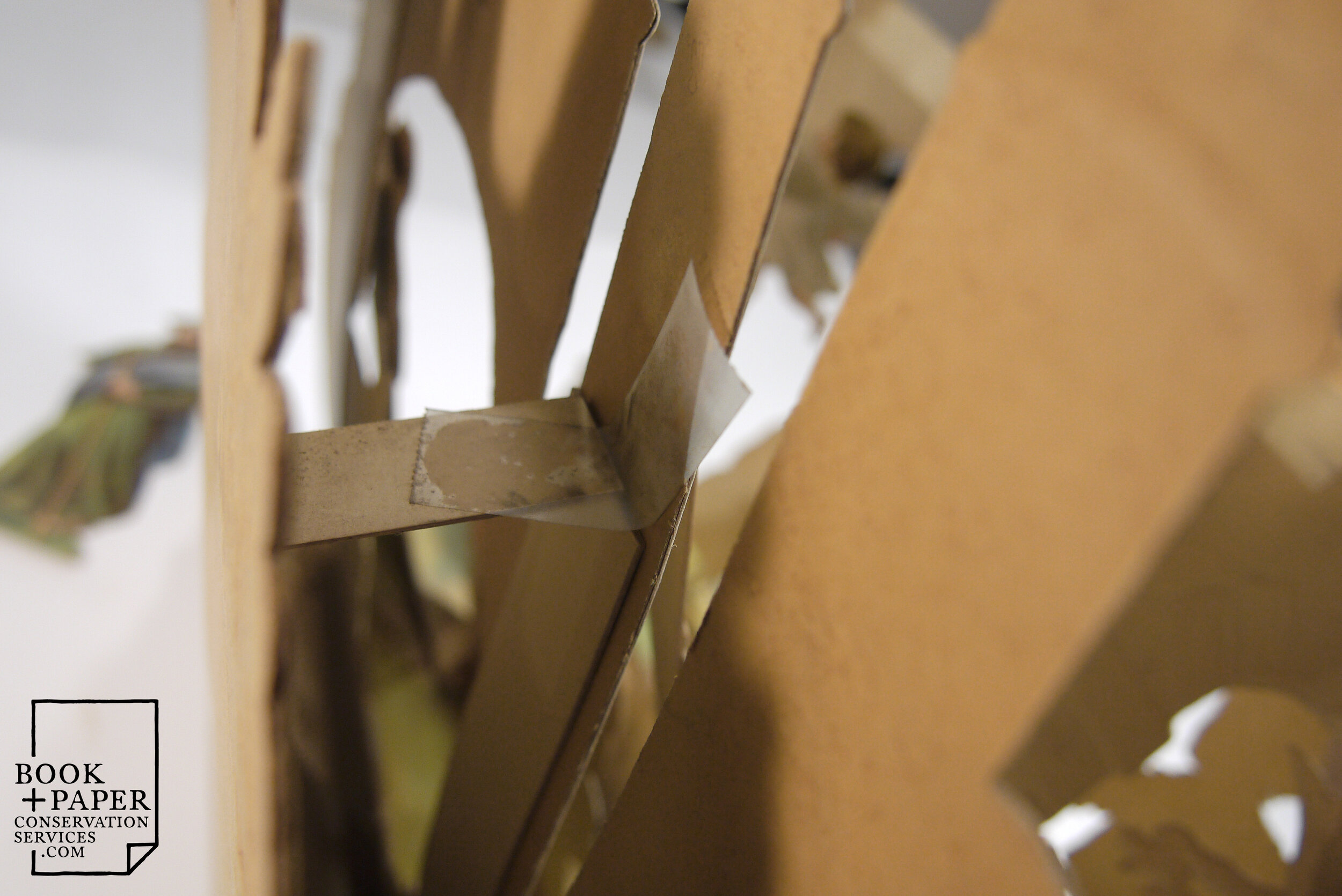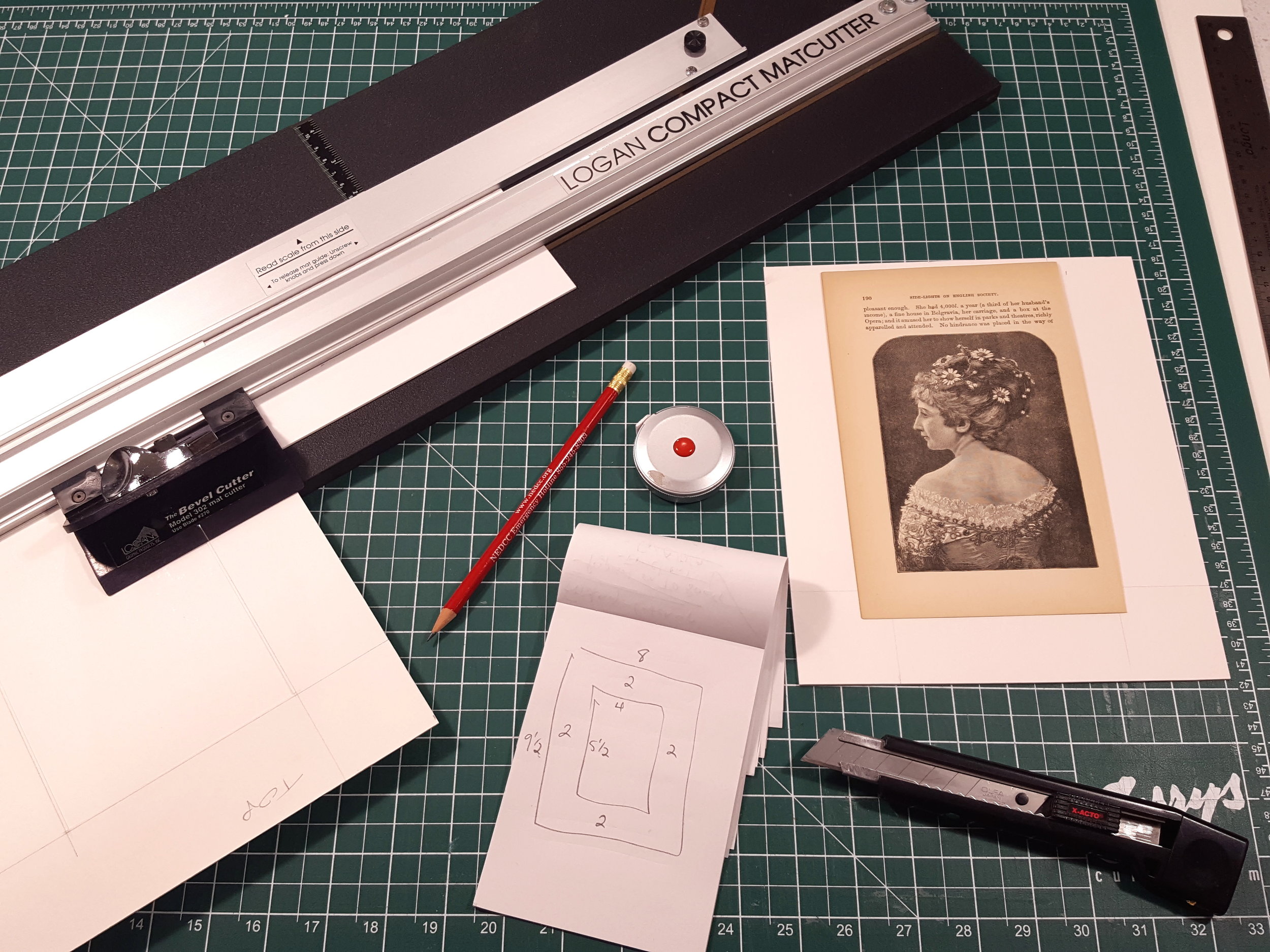This beautiful 3-dimensional nativity display was treated at Book and Paper Conservation Services nearly a year ago, but it seems appropriate to share it now for the holiday season. The cardboard fold-out die cut chromolitho shows a lushly detailed scene of the Nativity, with Mary and Joseph, the baby Jesus, and accompanying shepherds and sheep resting in a bright and peaceful manger. It is a gorgeous example of Victorian art manufacturing ingenuity, and was likely used in a store window display for the Christmas season.
The client who brought it in had fond memories of seeing it set up and displayed during her childhood, after her grandfather brought it home from work one year and it became a centrepiece of the family’s holiday traditions. She recently inherited it from her mother and wanted to display it once again at Christmas. Unfortunately time and usage had taken a toll on the delicate structure, in particular the folding mechanisms, and it was soiled and damaged beyond use.
She contacted Book and Paper Conservation Services about having it restored, and we were thrilled to have the opportunity to work on such a unique artifact.
The Nativity Scene partially opened.
Broken joints visible in side view.
The display stands nearly 2 feet high when open, but folds down to a flat and compact package, and the multiple layers of scenery and figures were made to fold and slide to accomplish this. Each layer stands individually, with a wonderful pop-up 3-dimensional effect, and the front facing sides are printed with jewel-like chromolithograph ink. However, the brittle board had snapped along most of the folding joints, many figures had broken off completely, there was brittle old adhesive tape peeling off from previous repairs, and a layer of dust and grime obscured the colours.
Old adhesive tape repairs are peeling off.
Broken joints of the folding mechanisms.
Treatment began with a gentle cleaning to remove dirt from both the front and back of each individual piece; next, broken figures and fragments were reattached using stable and reversible repair methods.
Cleaning dirt and grime off the printed surfaces using distilled water and cotton swab.
The Nativity propped open for repairs.
Colours returned to brilliance with cleaning.
Finally, each folding joint was repaired by replacing the broken board tab with a strip of stiff but flexible material; this enabled the mechanism to once again fold uninhibited but also gave it the strength to stand upright in its opened position. The sections were held in place with clamps and paperclips while they dried.
Once fully repaired, the Nativity was able to be opened safely and stand on its own for display, and the incredible detail could again be appreciated.
We also provided an acid-free, archival storage box for the piece to be kept in during the rest of the year, to protect and preserve it for the future.
The heart of the Nativity scene, with jewel-like colour and 3-dimensional depth.
After conservation treatment the Nativity scene is standing tall and looking brilliant once again.
The stepped layers with folding mechanisms repaired.
The owner was thrilled to have it back, restored to its former glory, and plans to display it during this holiday season. We are so pleased to have helped her restore an important piece of her childhood and bring back a little bit of the magic of Christmas!
If you are interested in having unique family heirlooms of your own conserved or restored, contact us for more information about our services.
Happy Holidays and best wishes for a wonderful New Year!


























